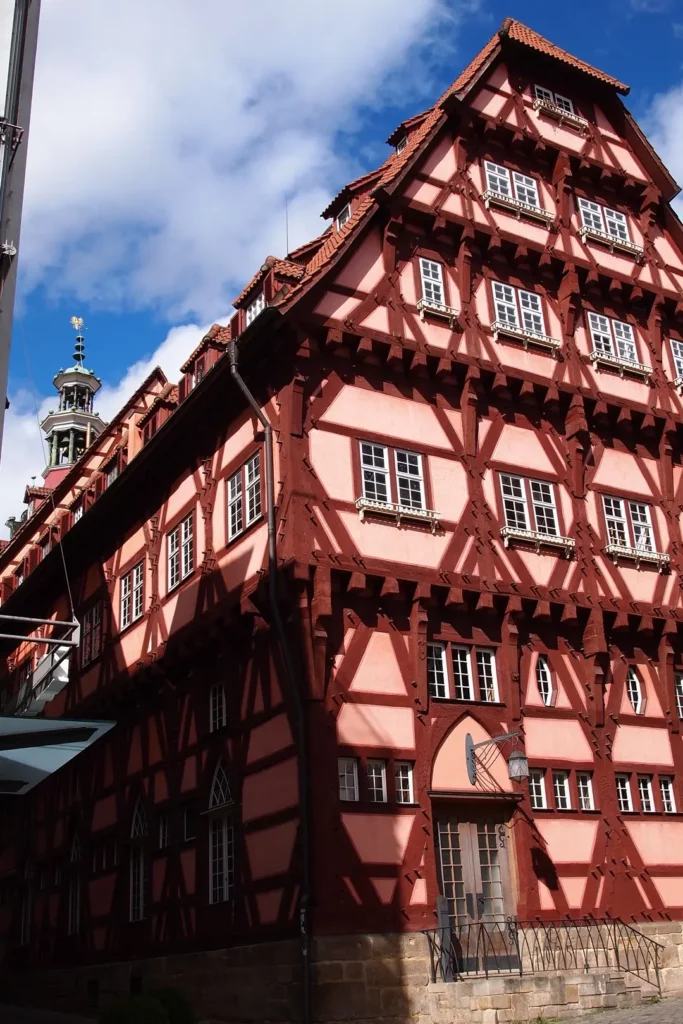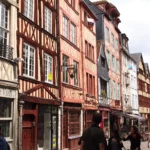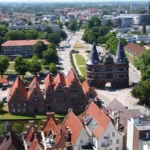Last Updated on 19/11/2023
Esslingen is located in the Neckar Valley near Stuttgart. Behind it the Neckar becomes unnavigable upstream, and from Stuttgart to Esslingen endless factories, plants and power plants stretch along the river.
Therefore, despite the fact that the old city itself is pretty, you can easily replace it with another one. You can find the same well-preserved half-timbered house in less industrial places: in Tübingen, Bad Wimpfen, Besigheim, not to mention the Black Forest.
It worth to see:
Swabian Alb map
From Ulm to Ellwangen. Albtrauf and Bavarian Swabia
North Black Forest. What to see
Stuttgart zoo Wilhelma. Flowers
Stuttgart
Schwäbisch Gmünd and Aalen
Romantic Franconia
Bad Urach Waterfall
Schwäbisch Hall. 1. What to see in old town
Another reason to come to Esslingen is the medieval Christmas market (preferably not on weekends – too many people).
History briefly
The place has been inhabited since the Stone Age. Under the Romans, there was a small estate here.
The city itself began to develop in the 8th century, when the monastery received the relics of St. Vitalis. This made it a popular destination for pilgrims. And to provide for the pilgrims town began to grow and received the rights of a market town.
In the 11th century, the city, along with all of Swabia, passed to the Staufens. Friedrich Barbarossa handed over the administration of the region to his representative in Esslingen. Some of the Staufens kept their own court in the city. For the city in the 12-13th centuries, this meant wealth. He began to actively rebuild: church of st. Vitalis was rebuilt into the church of St. Dionys, a bridge was built across the Neckar, several monasteries were built..
In the 14th century, quarrels began with neighboring Württemberg, they lasted until the 16th century. However, this did not prevent the city from developing. The Thirty Years’ War and the ensuing plague were very difficult for the city, but even here it managed to maintain its independence. It was lost in the early 19th century when the city passed to Württemberg.
During the war, Esslingen was bombed, but did not receive too much damage. This is why we can enjoy the well-preserved half-timbered old town
Esslingen map
The most interesting buildings are concentrated in the center, around the Market Square.
Esslingen is half-timbered town. About history half-timbered houses read here.

Esslingen old town
But we’ll start at number 1, Wolfstor. This is the oldest tower in the city, built in 1220. Lions are the symbol of the Staufens. The turret on top was stuck closer to our time.






Hafenmarkt. A modest building with gray stripes and red shutters is Germany’s oldest row of half-timbered houses (2).

However, the title of “oldest” is regularly transferred to new applicants. Dendrological examination made it possible to more accurately determine the age of the houses. Therefore, the house on Heugasse 3, which Esslingen calls the oldest, is still on the list after the houses in Quedlinburg and Limburg. True, his appearance is the most ordinary, and you will definitely not take him for a 13th century building. Another very old house at Webergasse 8.
Market square
But the building of the Old Town Hall will not seem ordinary.

It was built in the first half of the 15th century. From the less ceremonial side, it retained its appearance (3), and from the northern side, overlooking the square, received an elegant Renaissance facade in the 17th century.




Opposite – the building of the New Town Hall (on the right).

Near the Market Square – atypically huge in size. The size is explained by the fact that the square used to be the Katharinenspital, which was demolished in the 19th century.

The Kielmeyerhaus was built on the site of a burnt-down grape press in the 16th century.

Four floors of the roof served as a barn. The load was lifted through three lifting doors. The lifting mechanisms are still preserved. To the left of the entrance you can see the image of St. Katarina with a sword and a wheel.


We go to the fortress (5)


From the church you can walk upstairs, but we will save energy on the ascent to the fortress.


The stairs are very steep, my children and I never made it. Above – the preserved walls of the fortress and a view of the city.

In the center is the Cathedral of St. Dionysius (7) on the Market Square. We return to it. The cathedral was built in the 13-14 centuries. As usual, they started with the Romanesque style and finished with the Gothic style. The support was attached around 1600 and not at all for beauty, but so as not to fall apart.

Valuable are the stained glass windows dating from around 1300 and the wooden sculptures of the 16th century choirs.

Follow me
The Speyrer Pfleghof building served as a “branch” of Speyer Cathedral for tithes and other administrative matters. In the 19th century, the overseas distribution of Veuve Clicquot champagne was organized from here, mainly to Russia. The manager bought the company and created his own. Thus, the first German champagne was produced here.

Neckar flowing through the center was used for water wheels. They still produce energy. The area around was called – very “original” and predictably – Little Venice (8).




Innere Brücke is the last compulsory item on the program (9). The bridge was built in 1286 and for 200 years was the only bridge across the Neckar in the region. Of course, you had to pay to cross to the other side.
As usual, the bridge was built up. Now there are three small houses from the 18th century. The park below on the island is very popular with the residents. The island was regularly flooded, so it was never built up.
Further – map of attractions Around Stuttgart places to visit map
Stuttgart City.
Wilhelma Flowers, Animals
Bad Urach. Waterfall
Swabian Alb map
From Ulm to Ellwangen. Albtrauf and Bavarian Swabia
Schwäbisch Gmünd and Aalen
Romantic Franconia
Schwäbisch Hall. 1. What to see in old town
Do you enjoy the site without cookies? This means that I work for you at my own expense.
Perhaps you would like to support my work here.
Or change your cookie settings here. I don’t use personalized ads







